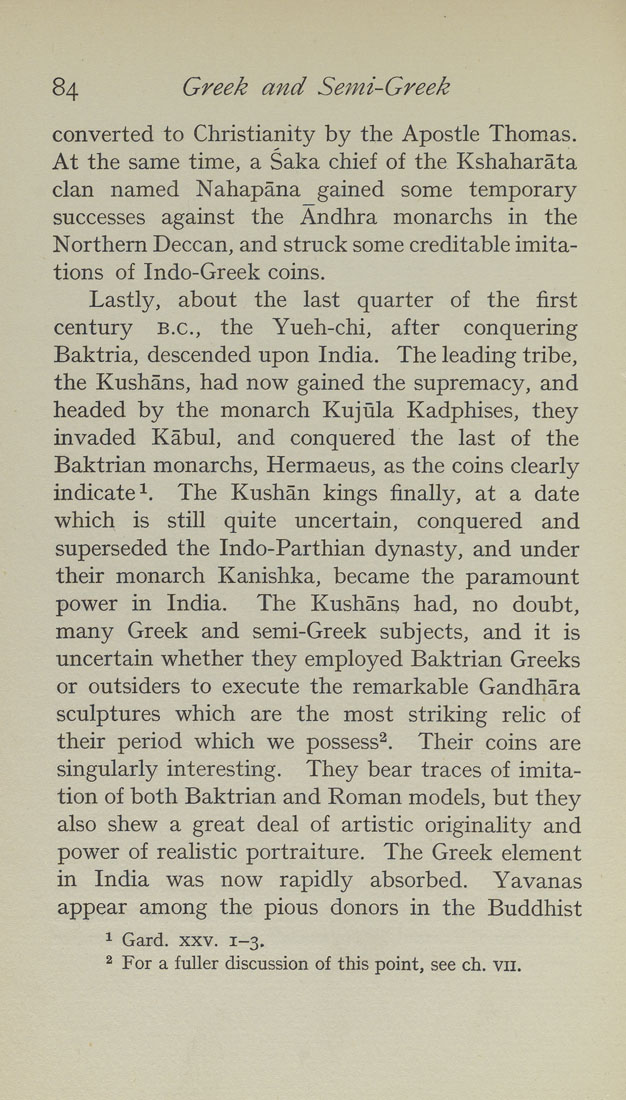84 Greek and Semi-Greek
converted to Christianity by the Apostle Thomas.
At the same time, a Saka chief of the Kshaharata
clan named Nahapana gained some temporary
successes against the Andhra monarchs in the
Northern Deccan, and struck some creditable imita¬
tions of Indo-Greek coins.
Lastly, about the last quarter of the first
century B.C., the Yueh-chi, after conquering
Baktria, descended upon India. The leading tribe,
the Kushans, had now gained the supremacy, and
headed by the monarch Kujiila Kadphises, they
invaded Kabul, and conquered the last of the
Baktrian monarchs, Hermaeus, as the coins clearly
indicate 1. The Kushan kings finally, at a date
which is still quite uncertain, conquered and
superseded the Indo-Parthian dynasty, and under
their monarch Kanishka, became the paramount
power in India. The Kushans had, no doubt,
many Greek and semi-Greek subjects, and it is
uncertain whether they employed Baktrian Greeks
or outsiders to execute the remarkable Gandhara
sculptures which are the most striking relic of
their period which we possess^. Their coins are
singularly interesting. They bear traces of imita¬
tion of both Baktrian and Roman models, but they
also shew a great deal of artistic originality and
power of realistic portraiture. The Greek element
in India was now rapidly absorbed. Yavanas
appear among the pious donors in the Buddhist
1 Gard. xxv. 1-3.
2 For a fuller discussion of this point, see ch. vii.
|








